ARGALI SHEEP (Ovis ammons) ARE THE LARGEST of the world’s wild sheep with rams weighing up to 350 pounds. Our mission is to capture, collect data, collar and release 10 argali and/or ibex while avoiding injury to staff, volunteers and the animals. The data will be used to establish policies to limit trophy hunting and protect the animals’ habitat, not an easy prospect when foreign hunting license fees average $25,000.
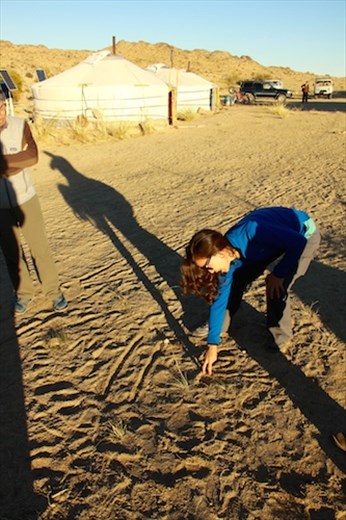
Instructions from Gana's playbook
After the morning introduction we headed out to set up the nets. Students drop bales of nets from the truck every 50 meters, along with splintery woodedn poles. Two parallel lines 350 meters long are erected ten meters apart to snarl any animals that avoid the first line. They are loosely supported by poles every ten meters or so that will fall easily when the animals hit the net, tangling the horns if we are lucky.
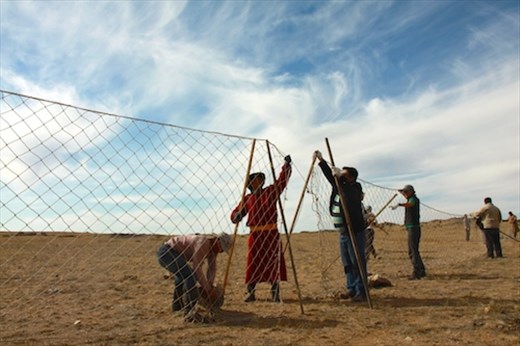
Erecting the nets is a twice-a-day job
While we're taking care of the nets Mongolian horsemen wearing colorful deel coats and daring motorcyclists locate the argali and slowly urge the animals towards the capture area, stampeding them the last few hundred meters into the waiting nets. Argali overheat if they have to run very far and measuring the temperature of captured animals is the best way to monitor their stress levels.
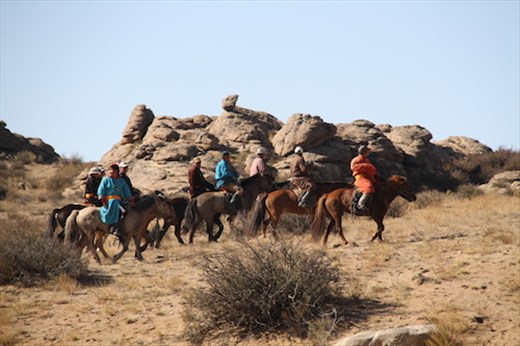
The game is afoot: Mongolian horsemen on the prowl
The first group of argali arrived almost before we were ready. We had just finished re-erecting the capture nets we had set yesterday afternoon when Gana shouted for us to take cover behind the rocks on the north end of the nets. Soon seven ewes ran towards the nets, pursued by horsemen. They veered right at the last instant, avoiding capture but headed directly towards my hiding spot. We didn’t capture any but I got the best photos of the trip. Some clouds, at least, do have a silver lining.
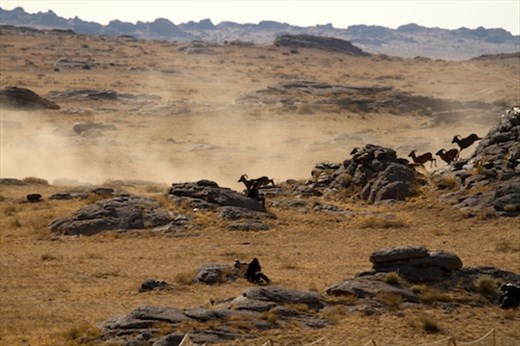
The ones that got away
I never saw the next group until Gana radioed that they were in the net; an argali ewe and an ibex. I grabbed my camera and started out only to see Connie diverting a wayward ibex towards the net. We Earthwatchers aren’t supposed to subdue the animals but Connie was the only one in the vicinity. I could almost see her mind pro-ing and con-ing the options before she jumped on the ibex tangled in the mesh, “mugging” in capture-speak.
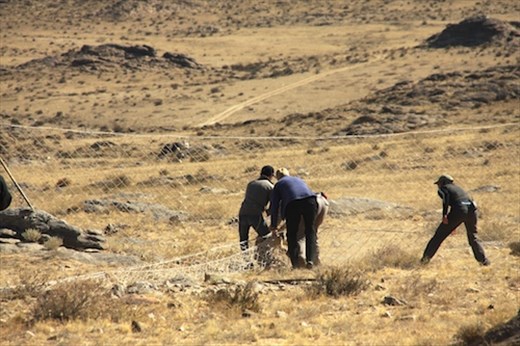
Connie mugs an ibex ewe
Everyone has an assignment and an alternate job once animals are in the net. Mine is photographer — and whatever else is needed — so after a few photos of Connie’s mugging I jogged (I no longer sprint) to record the capture of the two ewe argali at the other end of the net. While the Mongolian students measured the ears, horns, hooves, etc., applied ear tags and VHF collar, Scott and Zorigoo drew blood, monitored heart and respiration rates while others kept a constant eye on the animals’ temperatures. Safety, ours and the argali’s, is job #1.

Scott (L) collecting blood samples
At the other end of the net the same process was going on with Connie’s ibex, the only one we captured, as it turns out. Connie had the unenviable but important job of taking the ibex’s temperature with a nasty looking rectal thermometer. Stressed animals tend to overheat which can lead to death, so recording temperature is critical and cold water is applied to cool the beasts.
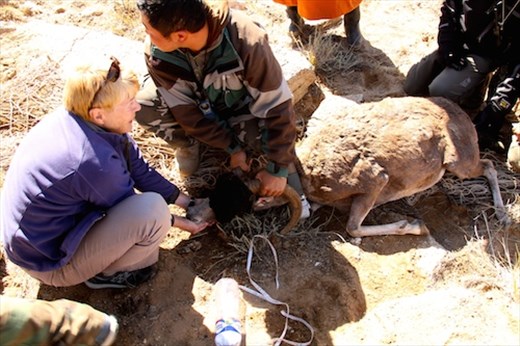
Connie monitors the ibex's temperature
This was our first day and three animals were too many for a trial run, as it turned out. Mistakes were made, some data was missed and much was lost in translation. Still, it was a successful morning, especially for us first timers — three animals, two species and three successful releases. And the ibex was named “Connie” in the data logs!
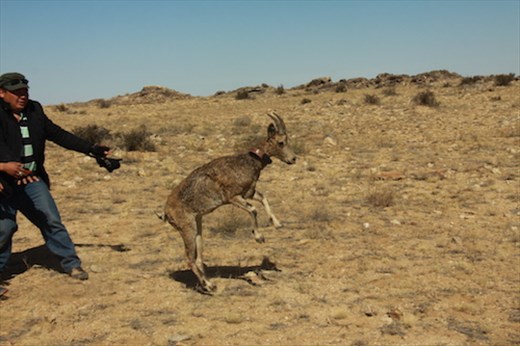
A happy ibex is free again
The afternoon was a snore. The animals seemed to have disappeared and we basked lizard-like in the sun, alternately reading and snoozing.